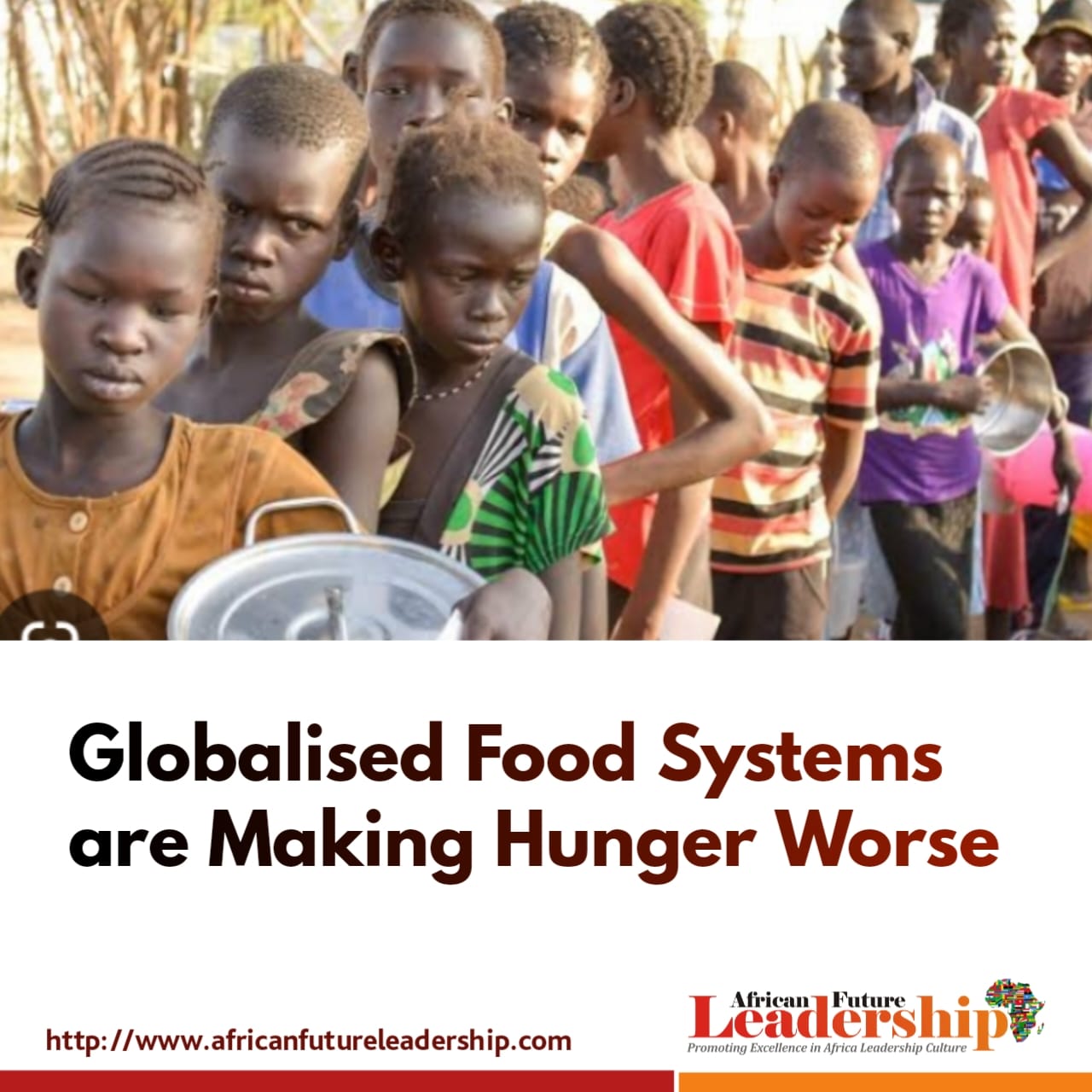Agency Report
With the rather confounding incidents happening around the globe recently, from COVID-19 to Russian President Vladimir Putin’s war on Ukraine to climate change, it seems all the calamities afflicting the world are converging to make hunger worse. The latest United Nations report on hunger finds the increase in the number of undernourished people globally this year has eliminated any progress over the past decade.
Yet while the world has not seen hunger at these levels for years, scholars have long warned that a catastrophe was looming. The world’s food system is more interconnected and complex than ever, built upon layers of transnational dependencies. It is why a war in Europe can exacerbate a famine in Somalia – a country which imports most of its wheat and saw its supply of bread all but collapse overnight when exports of Ukrainian wheat ceased.
READ MORE: Why Foreign Investors Avoid Nigeria’s Stock Market – Simon Kitchen
But instead of reducing the fragility of the food system, the latest international efforts led by the United States to end hunger are only exacerbating it – especially for Africa – by globalising the system further. Just last week, US President Joe Biden has promised African leaders gathered in Washington that the United States is ‘all in’ on Africa. But the US needs to make sure that it is ‘all in’ the right way, particularly when it comes to food.
The current crisis began when multiple pandemic-related shocks converged on the system, including lockdowns, a global economic downturn, and illnesses among food system workers, especially factory workers and migrant labourers. Climate change-related weather events, inflation and the Ukraine war have aggravated these stresses, rendering a complex and highly industrialised food system unable to serve the neediest people in the world even as it maintains steady supplies for the Global North.
Today, 80 per cent of the world’s 8 billion population depends at least partly on food imports to eat, and the money they spend on imported food has tripled in the past 25 years. About half of the 50 countries with the highest pandemic-induced price increases are also among the countries most dependent on food imports, and about three-quarters of those crops originate in the Global South. More than 95 per cent of Botswana, Mexico, and Jamaica’s imports of rice, wheat, and corn are from countries most affected by the pandemic, making countries like them disproportionately vulnerable to its disruptive effects.
Yet Washington appears keen to double down on this globalised system.
In October, US Agency for International Development (USAID) Administrator Samantha Power announced the latest round of Washington’s continent-spanning assistance for African agriculture. Along with increasing emergency food aid, the US government’s long-term response will be to invest an additional $75m in ‘large-scale food fortification’, or adding nutrients to commodity cereal crops through industrial processing.
Speaking in Des Moines, Iowa, the epicentre of agribusiness in the US, Power described large-scale food fortification as a means to provide African people with nutrients they might otherwise lack.
But as was written when USAID introduced the plan last year, African farmers have been cultivating nutrient-rich crops for as long as they have existed. Instead of helping them to provide nutritious diets to African people, the USAID plan only makes room for them to produce commodities for factories.
With the world’s attention shifting towards the climate impact of agriculture, US officials and agribusiness companies have tried to recast the industrial model as a solution to that problem as well. The new greenwashing campaign, dubbed ‘climate-smart agriculture’, was widely featured at COP27, even though it is little more than a new veneer for agricultural practices that contribute almost a third of total greenhouse gas emissions and drive biodiversity loss.
The opinion expressed does not mean to argue that the global agricultural system lacks any advantages. With Absence of any shocks, it is capable of producing and distributing food with extreme efficiency. In theory, at least, greater efficiency improves food access by keeping the supply of food high and prices low.
But the demand for efficiency has pushed farmers to grow single crops over large areas, or monocultures, depriving agricultural land of the biological diversity which makes food nutritious and agriculture resilient against climate change. In a 2018 study, scholars from the University of British Columbia found that farm-level biodiversity has decreased as farms have grown bigger. Today, just three crops – wheat, corn and rice – overwhelmingly produced in just five countries comprise nearly half of all calories consumed globally, and 86 percent of all cereal exports.
The focus on just a few crops has made our system extremely prone to price volatility. Worse still, it concentrates power in the hands of those farmers with the most land, capital and technology, along with the multinational grain traders who rake in massive profits during food crises. With the entire system engineered to exclude them, small and medium farmers who still produce almost half of the world’s food calories are being set up to lose.
READ MORE: National Green Growth wins Awards
In times of crisis, this approach also puts our entire food system at very great risk.
The US and other wealthy governments could encourage this change by giving farmers the resources to grow biodiverse crops for their communities over commodities that serve industrial processes. This would allow for a food supply that is biologically and ecologically complex but technologically and economically simple, allowing farmers to feed the world using resources that are readily available in nature and which they have used to feed humanity for thousands of years.



